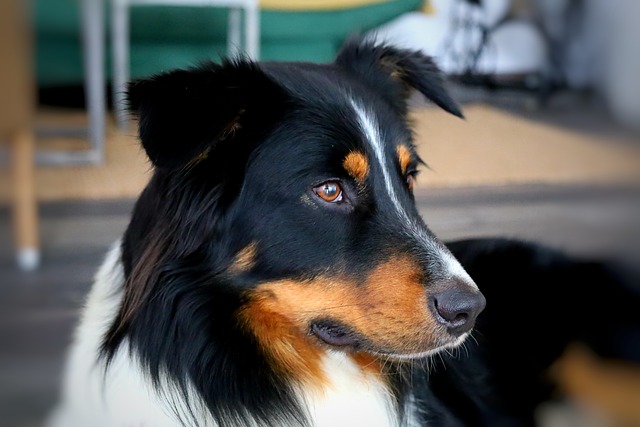
How can I tell if my dog's heatstroke is serious
Let’s be real: It’s a sticky August morning in Los Angeles, and you took your 2-year-old Golden Retriever, Max, for a walk a little later than usual
Imagine you’re in your New York City apartment, tossing your 18-month-old Lab mix their favorite rubber chew toy—they usually pounce on it, but today they sniff it and back away, then lick their lips like their mouth hurts. Later, you lean in for a goodnight cuddle, and a sour, stale smell hits your nose—way worse than “normal doggy breath.” You gently lift their lip, and you see it: their gums are pinkish-red, not the pale pink they should be, and there’s a thin yellow film on their back teeth. If this makes you think, “I need to fix this,” you’re one of millions of new U.S. dog owners wondering how to improve their dog's oral health—and it’s easier than you think, even in a tiny apartment.
Here’s the simple science (no fancy vet jargon!): Most dog oral issues start with plaque—a sticky mix of food bits, bacteria, and saliva that builds up on teeth after every meal. If you don’t brush or scrape it off within a day, it hardens into tartar—that crusty stuff that sticks to the gumline. Tartar irritates gums, causes bad breath, and can lead to cavities or even tooth loss over time. Small breeds like Shih Tzus or Chihuahuas are extra prone—their tiny mouths have crowded teeth, so plaque gets trapped easier. My friend in Chicago learned this the hard way: She skipped oral care for her Pomeranian, and by the time she noticed his bad breath, he had early gum inflammation—luckily, simple changes turned it around fast.

The best ways to boost your dog’s oral health are small, daily habits that fit right into apartment life. First, brush their teeth (gently!). Use a dog-specific toothbrush (the small head fits tiny mouths!) and toothpaste—never human toothpaste, it’s toxic. Start slow: Rub the brush on one tooth, give a tiny freeze-dried chicken treat, then stop. Build up to 30 seconds a day—positive reinforcement makes it a game, not a fight. Second, swap treats for oral-friendly picks. Skip soft, sugary biscuits—they stick to teeth. Instead, go for VOHC-sealed dental chews (the U.S. standard for plaque-fighting) or frozen carrot sticks—crunchy, cheap, and safe for even puppies. Third, pick quiet dental toys for apartments: Rubber Kongs stuffed with a little plain yogurt (freeze it for longer play!) scrape plaque while your dog chews, and they won’t wake up your downstairs neighbor like loud rawhides do.
Don’t forget U.S. rules and community norms that tie into oral health. First, keep your dog’s rabies vaccine up to date—most vets won’t do a professional oral exam (to catch early issues like tartar buildup) unless their shots are current, and many dog parks or daycares in Denver or LA require proof of vaccines too. Always carry waste bags on walks: Leaving poop behind isn’t just rude—it’s illegal (I saw a mom get a $35 ticket in Austin last week!) and lets your dog eat bacteria-filled dirt that can worsen gum problems. In apartments, store oral care products (like toothpaste or dental chews) in high cabinets—dogs love to sneak snacks, and too many chews can cause an upset tummy. Most importantly, never punish your dog for resisting teeth brushing: Yelling or holding their mouth shut goes against U.S. animal welfare standards (the ASPCA calls this “harmful to trust”). If they squirm, take a break, give a treat, and try again later—patience works better than force.
With these small steps, you’ll start to notice a difference: fresher breath, happier chewing, and gums that go back to healthy pink. If you see bleeding gums or your dog stops eating, call a vet ASAP—but for most pups, consistent at-home care is all it takes to keep their mouths healthy.

Let’s be real: It’s a sticky August morning in Los Angeles, and you took your 2-year-old Golden Retriever, Max, for a walk a little later than usual

You're enjoying a summer afternoon at the park when you notice your dog has stopped panting and appears disoriented - their gums are bright red

Let’s paint the picture: You’re in your Denver apartment, watching your 4-year-old Boston Terrier, Ruby, plop down mid-play session with her favorite toy

Many dog owners notice their pets nails seem shorter after regular walks,but how much does this daily activity actually help?The answer depends on where you walk—concrete sidewalks or asphalt streets gently file nails as a dog's paws hit the ground

Most dog owners notice their pup scooting across the carpet at some point, but few connect it to impacted anal glands. These small sacs near a dog’s rectum secrete a scent for marking territory

Most vets agree that regular dog teeth cleaning is key to avoiding painful dental issues later. For healthy adult dogs, a professional cleaning at the vet’s office every 12 to 18 months usually works well.